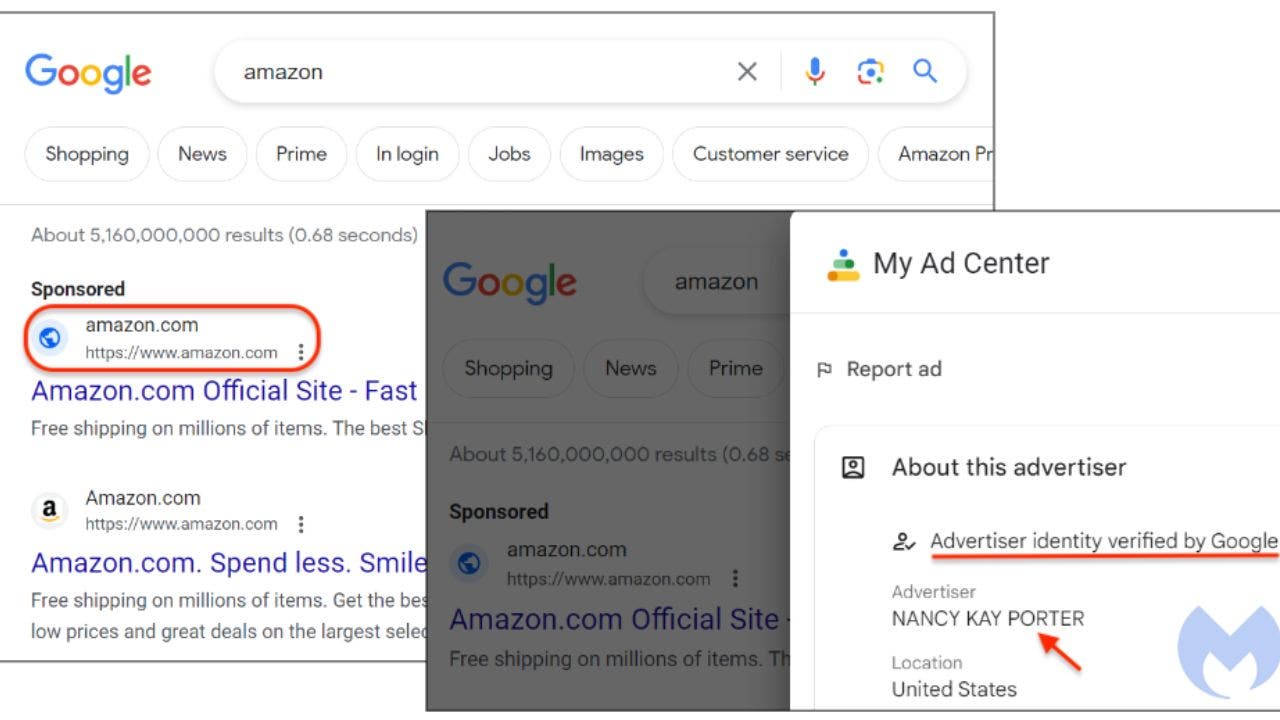When it comes to shopping online, many people start by using a search engine like Google to find the product they’re looking for. They usually click on one of the top links that appear in their search results. However, cybercriminals have caught on to this behavior and are taking advantage of it. Let me walk you through exactly how they’re doing this and what you can do to protect yourself from clicking on malicious links.
One method cybercriminals use is called malvertising, short for malicious advertising. They purchase ad space on legitimate platforms like search engines, social media sites, or popular websites and insert harmful links or code into fake ads that resemble legitimate Amazon or Microsoft ads. These fake ads appear at the top of your search results when you look for something related to the ad. Clicking on these ads can lead you to websites hosting malware or prompt you to download files containing malicious software, which can harm your computer and compromise your personal information.
The reason these fake ads are so effective is that they closely resemble the real ones from Amazon and Microsoft, and they appear right at the top of the search results. People may not think to investigate further before clicking on them. To determine if a sponsored ad is fake, there are a few things you can do:
1. Check the website’s domain: Pay close attention to the domain name in the link. Scammers often create fake websites with domains that look similar to popular or trusted ones. Verify that the domain matches the legitimate website you intend to visit.
2. Examine the website’s appearance and content: Take a close look at the overall design, appearance, and content of the website. Poorly designed or unprofessional-looking websites could be indications of malicious intent. Look for typos, grammatical errors, or suspicious content.
3. Hover over the link: Without clicking on the link, hover your mouse cursor over it to see the actual URL that appears in your browser’s status bar or tooltip. Make sure it matches the link you expect to visit.
4. Be cautious with shortened URLs: Exercise caution when encountering shortened URLs created by services like bit.ly or tinyurl.com. These links can obscure the original destination, making it difficult to assess their legitimacy.
To avoid falling victim to cybercriminals, it’s important to stay informed about their techniques. Keep up with the latest scams and schemes they’re using. If you’re unsure about a shopping site, do a Google search with the name of the site and the word “scam” to see if there are any red flags.
Be cautious of phishing emails and texts that ask you to click on a link or provide personal information. Scammers often impersonate high-ranking officials or government organizations to trick you. Avoid oversharing on social media, as scammers look for easy targets. Also, be wary of fake product reviews and use websites like Fakespot.com to check the authenticity of reviews before trusting them.
Consider using a secure browser that has built-in security features like phishing and malware protection. Keep your software up to date, as updates often include security patches that address vulnerabilities. Having antivirus software on all your devices is crucial to prevent clicking on malicious links or downloading malware.
Remember, don’t blindly trust the first thing you see online. Stay vigilant and take the time to verify the authenticity of websites and ads to protect your personal information.
Denial of responsibility! VigourTimes is an automatic aggregator of Global media. In each content, the hyperlink to the primary source is specified. All trademarks belong to their rightful owners, and all materials to their authors. For any complaint, please reach us at – [email protected]. We will take necessary action within 24 hours.


